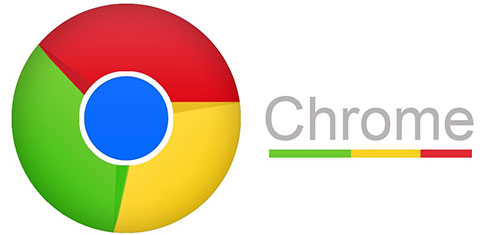
I'm not a fan of Google Chrome as it is not respecting users freedom and compatible with Free Software Philosophy just like it is bad for Google does track all your requests from the browsers but as there is a very large chunk of computers from various Operating Systems on the Internet that use it as a default Desktop browser it is a must in the arsenal of browsers to have,.
Hence Google Chrome is a necessery evil for for those who use their computer for quality assurance QA of web based websites for those developers or web testers who have to make sure a developed website is to be perfectly visualizing across all major web browsers across one major concern is how website behaves with Google Chrome.
1. Install Google Chrome web browser on Debian and Ubuntu Linux
In Debian GNU / Linux 9, Google Chrome browser is not among the non-free available and installable packages with apt-get
In order to have t installed, you have to manually download the debian .deb package distributed by Google, e.g.:
wget https://dl.google.com/linux/direct/google-chrome-stable_current_amd64.deb
…
Once downaloaded next step is to install using dpkg tool:
debian-linux:~# dpkg -i google-chrome-stable_current_amd64.deb
Selecting previously unselected package google-chrome-stable.
(Reading database … 300021 files and directories currently installed.)
Preparing to unpack google-chrome-stable_current_amd64.deb …
Unpacking google-chrome-stable (55.0.2883.87-1) …
Setting up google-chrome-stable (55.0.2883.87-1) …
update-alternatives: using /usr/bin/google-chrome-stable to provide /usr/bin/x-www-browser (x-www-browser) in auto mode
update-alternatives: using /usr/bin/google-chrome-stable to provide /usr/bin/gnome-www-browser (gnome-www-browser) in auto mode
update-alternatives: using /usr/bin/google-chrome-stable to provide /usr/bin/google-chrome (google-chrome) in auto mode
Processing triggers for menu (2.1.47) …
Processing triggers for man-db (2.7.6.1-2) …
Processing triggers for desktop-file-utils (0.23-1) …
Processing triggers for gnome-menus (3.13.3-8) …
Processing triggers for mime-support (3.60)
..
Note to make here is either you have to be root superuser as in above example, or you'll have to run it through sudo command to emulate administrator privileges
debian-linux:~$ sudo dpkg -i google-chrome-stable_current_amd64.deb
…
Once the Install completes, it will automatically add a Shortcut in your Gnome or KDE desktop start menus (in newer gnome versions that miss the standard start menu, but instead use the application dock, you can directly search it through the Unity dock search applet.
You can also manually run the browser in Gnome by pressing the good old (ALT+F2) to invoke the command run screen
or open gnome-terminal / konsole / xterm whatever terminal you prefer and run it with command:
debian-linux:~$ google-chrome
2. Installing Google Chrome on Fedora and CentOS Linux
There are available RPM packages in the Google provided RPM repository, so on Fedora and CentOS Linux fist thing to do is to add the necessery reposotiries to yum package manager:
For this you will need to have created file /etc/yum.repos.d/google-chrome.repo with a text editor and place inside:
[google-chrome]
name=google-chrome – $basearch
baseurl=http://dl.google.com/linux/chrome/rpm/stable/$basearch
enabled=1
gpgcheck=1
gpgkey=https://dl-ssl.google.com/linux/linux_signing_key.pub
You can also directly do it without using a text editor (this is especially) helpful if you need to deploy Google Chrome on a bunch of Linux computers lets say in university computer laboratory simultaneously by issuing with a script that is connecting to multiple hosts through ssh the following:
cat << EOF > /etc/yum.repos.d/google-chrome.repo
[google-chrome]
name=google-chrome – $basearch
baseurl=http://dl.google.com/linux/chrome/rpm/stable/$basearch
enabled=1
gpgcheck=1
gpgkey=https://dl-ssl.google.com/linux/linux_signing_key.pub
EOF
Next step is to install it with yum on the single or multiple hosts with:
[root@fedora:~ ]# yum update
…
[root@fedora:~ ]# yum install google-chrome-stable
…
This should deploy google chrome and from now on you can either look for to start it from Application menu or run it manually in terminal:
[hipo@fedora:~ ]$ google-chrome
Though above example to install is Fedora 21,22,23,24,25,26 versions specific, the install across different CentOS 6, 7 and Redhat Enterprise Linux (RHEL 7.3) versions is identical.




